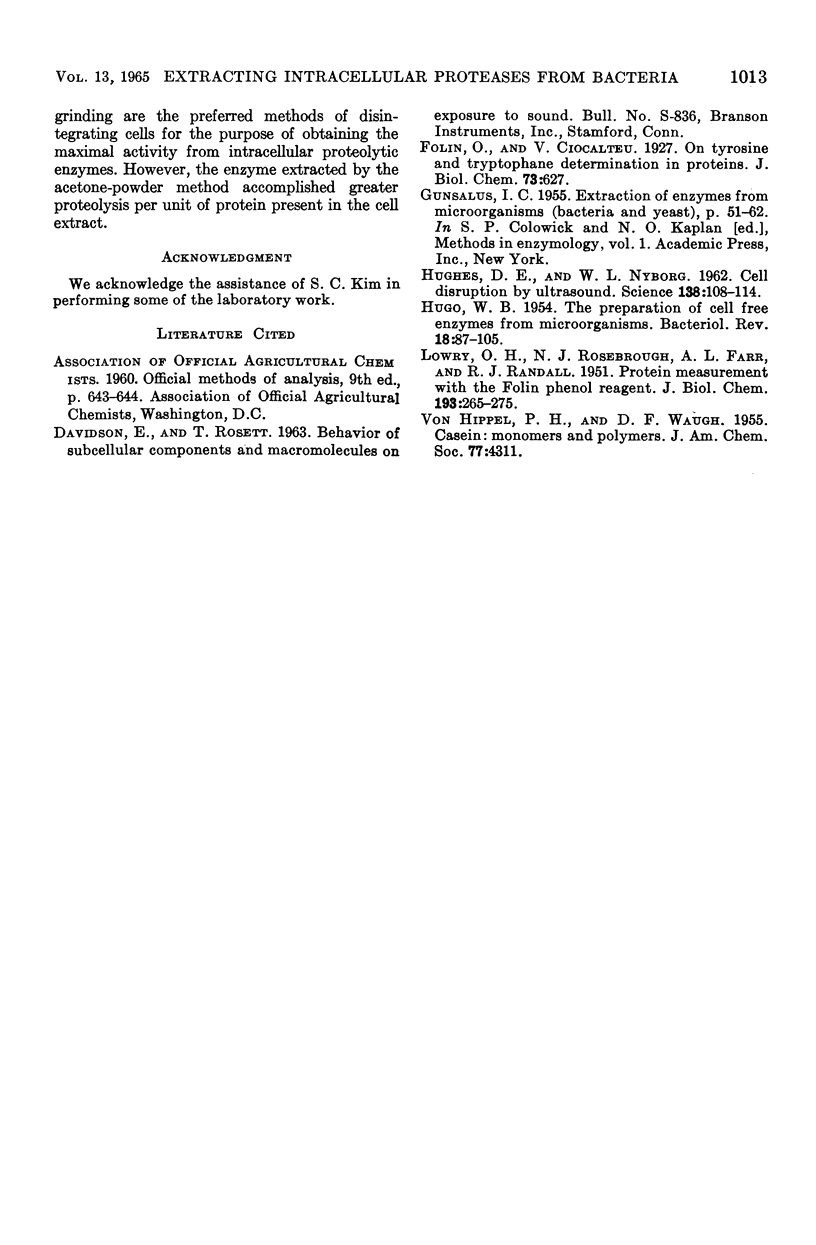Abstract
Five commonly used methods of disintegrating bacterial cells were compared by use of Bacillus subtilis, Pseudomonas putrefaciens, and Streptococcus durans as the test organisms. These methods were: (i) sonic treatment, (ii) grinding, (iii) freezing and thawing, (iv) acetone-powder, and (v) toluene. Sonic treatment and grinding yielded more protein in the cell-free extracts than did the other methods. Likewise, the protease activities (micrograms of tyrosine liberated per milliliter of extract) of sonically disrupted and ground cell extracts on casein substrates were far greater than those in extracts from cells disintegrated by the other methods. When the specific activity was based on the amount of tyrosine liberated per milligram of protein in the extract, the acetone-powder method yielded the most active protease extract, whereas the extract obtained by sonic treatment was least active. Other methods yielded extracts with intermediate specific activity.
Full text
PDF



Selected References
These references are in PubMed. This may not be the complete list of references from this article.
- HUGHES D. E., NYBORG W. L. Cell disruption by ultrasound. Science. 1962 Oct 12;138(3537):108–114. doi: 10.1126/science.138.3537.108. [DOI] [PubMed] [Google Scholar]
- HUGO W. B. The preparation of cell-free enzymes from microorganisms. Bacteriol Rev. 1954 Jun;18(2):87–105. doi: 10.1128/br.18.2.87-105.1954. [DOI] [PMC free article] [PubMed] [Google Scholar]
- LOWRY O. H., ROSEBROUGH N. J., FARR A. L., RANDALL R. J. Protein measurement with the Folin phenol reagent. J Biol Chem. 1951 Nov;193(1):265–275. [PubMed] [Google Scholar]


